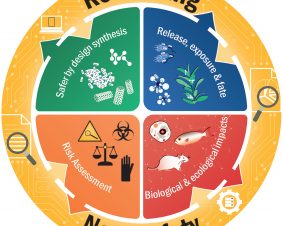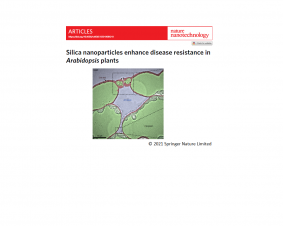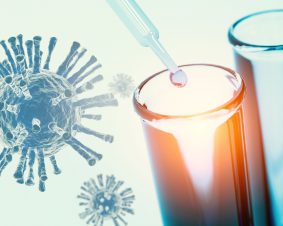 >
Spotlight April 2022: A new risk assessment of nanomaterials in 3D printing is needed
>
Spotlight April 2022: A new risk assessment of nanomaterials in 3D printing is needed
The use of nanomaterials in 3D printing has great potential. Due to the properties of nanoscale materials, many requirements can be implemented in 3D printing. However, these unique properties based on the size of the particles also lead to the need for new risk assessments. This is because if the nanoparticles are released in the printing process or subsequently from the finished product, they could pose a risk to humans and the environment. Future risk assessments of nanomaterials will therefore need to address not only the “non-nano” properties of the substances used, but also evaluate their size-based properties.
The review article by Taylor et al. presents the current state of the art regarding the use or emergence of nanomaterials in 3D printing. However, it also addresses the current safety precautions and regulations that must be followed when dealing with nanoparticles in 3D printing in various countries.
3D printing is used in many industries, including automotive and aircraft manufacturing. Alumina or zirconia are the most commonly used nanomaterials. The greatest risk to humans comes from nanoparticles that are released and subsequently inhaled or absorbed through the skin (see also “How can innovative materials (e.g.nanomaterials) enter the body or the environment?“). These are embedded in polymers (e.g., polyurethanes), metals (e.g., aluminum oxide), or biological materials (e.g., cellulose). Therefore, the nanomaterials are mainly released embedded in these carrier materials, but formation during the printing process for evaporation processes is also possible. So far, it is difficult to track the release of individual nanoparticles over the life cycle.
Future nanospecific regulations must therefore include analyses of the life cycle, the release potential, and an assessment of the hazard potential for humans and the environment. However, due to a lack of data on the number and form of nanomaterials released (free or bound) in 3D printing, many uncertainties remain about the exact risk. However, as knowledge about this will increase, regulations (e.g., on occupational health and safety) will also need to be more specific in the future.
Finally, the authors point out that early consultation of 3D printer manufacturers with authorities can lead to future regulations both meeting safety concerns and enabling practical implementation.
Original Publication:
Alicia A. Taylor, Elaine L. Freeman, Merel J.C. van der Ploeg, Regulatory developments and their impacts to the nano-industry: A case study for nano-additives in 3D printing. Ecotoxicology and Environmental Safety 2021, 207, 111458.

Weitere Spotlights
Spotlight April 2023: Recycling rare earths – bacteria assist in the circular economy
Rare earths are important components of wind turbines, catalytic converters, fibre optic cables and plasma screens. Since the 17 metals grouped under this term are indispensable for modern technologies, demand and costs are constantly rising. The occurrence of productive mining sites is limited and the production is often costly and environmentally harmful. The advantages of […]
Read moreSpotlight Juli 2020: “Nanosafety – More than just regulatory processes”
Nanosafety is more than just a compulsory aspect of nanomaterials research and regulation. This research area also has great potential to drive new innovations. It is exactly this perspective that is addressed in the special issue “Rethinking Nanosafety: Harnessing Progress and Driving Innovation” by Chen et al. 2020. The article illustrates that especially in the field of […]
Read moreSpotlight December 2021: Silica nanoparticles improve plant disease resistance
The resistance of plants to various pathogens is often increased in agriculture with various chemicals (“fertilizers”). A new direction is being taken with the use of nanoparticles. These can be sprayed on the plants. In the present study, the model plant Arabidopsis was used to investigate whether silicon dioxide nanoparticles (SiO2) can increase resistance to […]
Read moreSpotlight March 2021: Is Nanotechnology the Swiss Army Knife against Future Pandemics?
The COVID 19 outbreak has led to a fundamental rethinking of existing approaches to diagnosis, treatment, and prevention methods. The need for better and more efficient concepts is global and urgent. Nanotechnology has long been at the forefront of innovation and has led to advances in many different disciplines. Could this interdisciplinary field help develop […]
Read more


